#plasmodial slime
Text
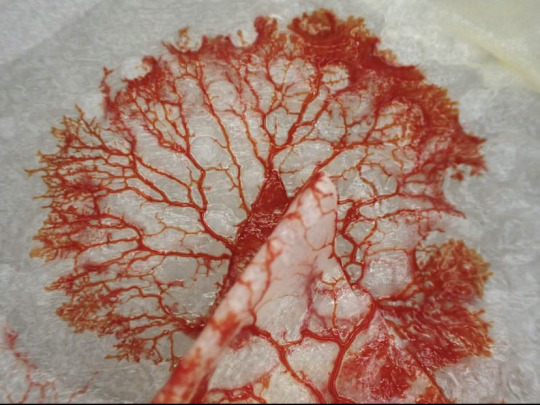
plasmodial slime mold by kataoka5233
#plasmodium#plasmodial#kataoka5233#myxomycota#slime mold#slime mould#myxomycetes#texture#microbiota#macro photography#microbiology#microorganisms
2K notes
·
View notes
Text
SLIME MOLD




ORANGE SLIME MOLD SPORANGIA STAGE
#slime mold#plasmodial slime mold#sporangia#slime mold sporangia#orange slime mold#I FUCKING!! LOVE!! SLIME MOLDS!!!!#AUUGJDJADBJGKSKFNF#this is 2 days growth. im gonna be monitoring the spread
15 notes
·
View notes
Text
Feed Me Oat Flakes
Bref double poem
I am plasmodial slime mold
I am just a single cell.
My name is Jerry, feed me
I like to eat the oat flake.
I move on the forest floor
I expand in search of food
I am Jerry, squishy gold,
Looking for oats to uptake.
No oat flake means I make spore
I spread spores in the wind
To make new Jerrys and grow
Finding new oat flake to take.
Small Jerrys fuse, taking hold
Of the entire oat flake store.

#poem#writing#creative writing#poetry#original poem#funny#plasmodial slime mold#slime mold#scienceblr#school#biology#bioblr#amoeba#oat flakes#Jerry the slime mold#mycology#myxomycota#myxomycetes
18 notes
·
View notes
Text

doing the worst study known to man out of a precision laboratory (my room) on a reputable campus (my parents' house)
#biology#mycology#plasmodial slime mold#plasmodial slime mold growth study#<- tag for future reference if anyone wants to follow this abomination#idk yet if this is fuligo septica or physarum polycephalum#after the duration of this is over im gonna trigger one of the samples to fruit so i can identify it properly#im also gonna publish the 'paper' in another tumblr post#this is literally the only thing keeping me from going insane until i enroll in the fall
3 notes
·
View notes
Text


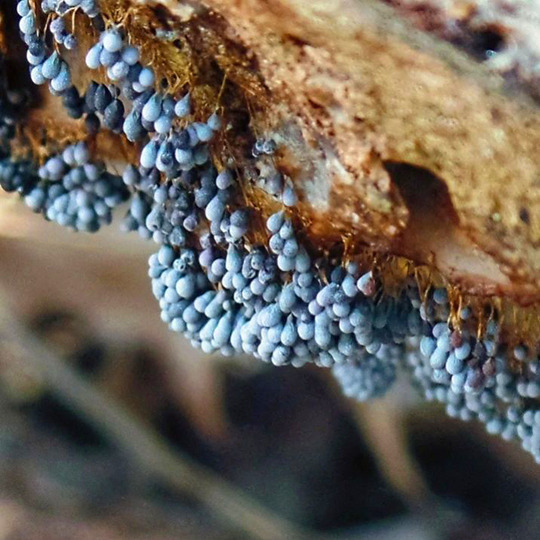

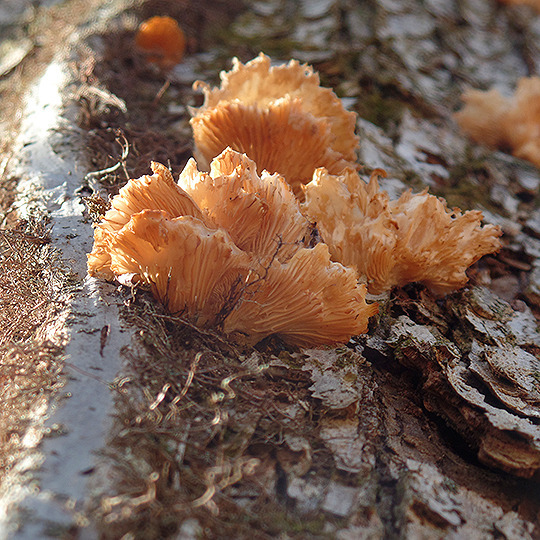

Some bracket fungus, the sporangia of a plasmodial slime mold (maybe Physarum sp) and very frozen oysters
#mycology#fungi#mushrooms#nature photography#dirtcore#goblincore#forestcore#slime mold#woods#forest floor#foraging#nature#the fungus among us
210 notes
·
View notes
Text


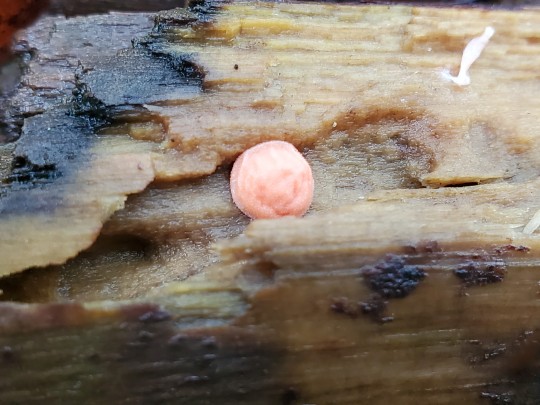


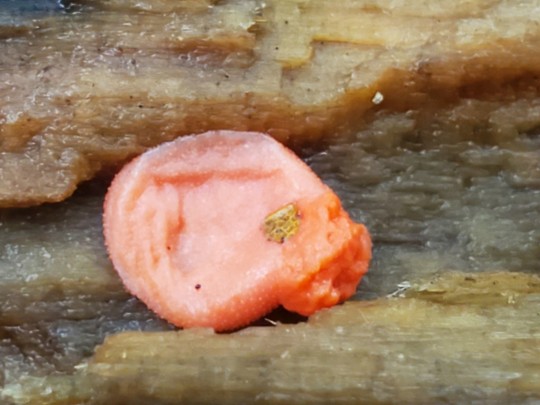
Wolf's milk 》 Lycogala epidendrum
Another slime mold I've seen a lot on my dash that I finally encountered in the wild!
Slime molds are not fungi, but exist in their plasmodial stage as single celled ameoba-like organisms that phagocytize (engulf and digest) fungal/plant spores, bacteria, and protozoans. When conditions are right, these individuals use chemical signals to aggregate, forming the fruiting bodies shown here! Upon maturity, the paste inside these fruiting bodies becomes a mass of spores.
Slime molds are so whacky and interesting! Such a unique form of life.
Southeast Texas, 10 April 2024
#not fungi#not a fungus#slime mold species#slime mold#myxomycetes#myxomycota#amatuer mycology#mushroom hunting#mushrooms#mycology#fungi#mushrooms of texas#texas mushrooms#wild fungi#fungi of texas#fungarium#slime#wolfs milk slime#wolf's milk#texas slimes#slime molds of texas#foraging texas#foraging#species identification#special interest#rot#decay#goblincore
14 notes
·
View notes
Text
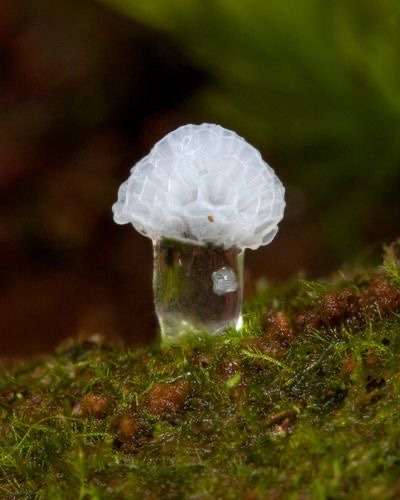
Ceratiomyxa morchella
plasmodial slime mould
via inaturalist
362 notes
·
View notes
Text


pictures of my pet slime mould Ditto! its only a few days old.
fun fact: slime moulds are not mold!! mold is a fungus but these guys are actually fungi-like protists! that means they are similar to fungi (eukaryotic heterotrophs (consumers) who eat their food by absorption) but aren't close enough related on the evolutionary tree to be in the same group (too genetically different).
also, slime moulds are single celled organisms! Ditto gets so big because its a plasmodial slime mould, basically a bunch of cells melded together into one giant cell with a bunch of nuclei. the process of it moving and branching out is called cytoplasmic streaming.
side note: "protists" aren't a true taxonomic category, more like a catch all for referring to any eukaryotic organism that isn't a plant, animal or fungus. however they typically have either plant, animal or fungus-like traits.
also important: Ditto eats oatmeal.
#look at my beautiful child#yes i did name it after the pokemon#because Ditto the pokemon is fluid in its shape and can take on many forms. similar to amoebas and slime moulds#ik im so clever /j#slime mould#slime mold
46 notes
·
View notes
Text
my top 4 .creatures
clown loach
plasmodial slime mold
anomalocaris
cat
10 notes
·
View notes
Text

Ceratiomyxa fruticulosa and the plasmodium of another slime mold.
by Tim Boomer
#ceratiomyxa fruticulosa#honeycomb coral slime mold#tim boomer#myxomycota#ceratiomyxa#plasmodium#plasmodial#texture
1K notes
·
View notes
Text
Plasmodial slime molds telling you how many cells they have

25 notes
·
View notes
Note
lets be slime.... together
omg..... can we be plasmodial
3 notes
·
View notes
Text



Isaiah (The Holy Seed)
Harris Rosenblum
French Green Cosmetic Clay, MicroSD card boot drive(Headless Debian 12 Distribution, text files for published sequences plasmodial slime molds, text files for all published sequences of Chytrid fungus, multithreaded python script which recombines text files while searching for duplicate strings of text, CAD files and simulation scripts used in production of the object), sand, CNC machined acrylic, Polylactic Acid, wargame flocking, custom machined brass hardware, lamp black pigment, gum arabic, automotive filler primer, Nitrocellulose based enamel paint, stainless steel hardware, custom made anodized aluminum M3 socket, head bolts
8 notes
·
View notes
Text
dog vomit slime mold (Fugilo septica) may release a liquid when pierced while forming fruiting bodies, though i wasn't able to record this. the consistency of it is like partially dried paint. after a time exposed to the open air, the touched portions turn orange.
this could be oxidization, or it could be the mold forming into a sclerotum.
Video ID: A specimen of Fugilo septica, also known as the scrambled egg slime mold or the dog vomit slime mold, is poking out from beneath the bark of a fallen tree. It is a bright shade of yellow and lumpy. When touched, the recorder's finger comes away with a small smear of it on their finger. Then, the recorder peels back some of the bark to reveal a network of small tendrils much larger than the fruiting body. End Video ID.

5 notes
·
View notes
Note
hihihihihihiiiiii
plasmodial slime molds are awesome go look them up
:)
Slayy
2 notes
·
View notes
Text
in todays edition of Eldritch Anatomy Weekly, i have reason to believe Eldritches are actually massive single celled organisms. think slime molds like the Myxomycetes, typically most species are single celled for most of their lives but can become multicellular by merging with other slime molds and move as a single body, typically when food is in short supply. this also may explain Eldritch reproduction: spores. this would probably make the most sense as Eldritches spawn far away from any other, so the spores would drift far away from the parent before hatching, especially as even slime mold spores can remain germinable for several years. them being single celled organisms would also explain their polymorphism given that they would basically be plasmodial. i knew there was a reason why slime molds called to me back when i was researching them for biology class in college lmao
i think this begs the question: are Eldritches actually a species, or are they actually a taxonomical class of organisms?
3 notes
·
View notes